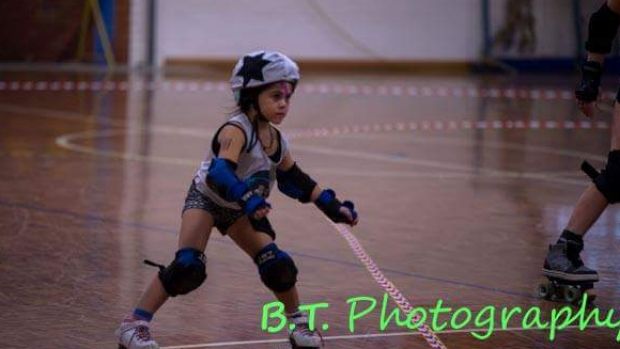Seven-year-old Phoenix Clucas' eyes were red with blood and her face was blue with asphyxiation when she was found hanging from her necklace that had snagged on a slide at an indoor playground during a friend's birthday party.
A loop of Phoenix's favourite necklace – which she wore doubled around her neck because it was too long – had caught as she slid feet first down the spiral slide on NSW's Central Coast.
More National News Videos
Injury biggest killer of Australian children
Injuries are the number one cause of death in children under 17, according to the first ever national study of nearly 700,000 hospitalisations over the past 10 years.
The necklace acted "like a slipknot, like a noose," her mother Kriztle Greco said from the family's Shelly Beach home on the Central Coast where her daughter is now recovering.
Nobody knows how long Phoenix was lying there clinically dead before her father Scott Clucas heard children screaming: "Phoenix is choking in the black slide", and raced to her rescue.

While Phoenix survived, surprising police and emergency workers, many children don't.
Injuries are the number one cause of death in children under 17, finds the first ever national study of nearly 700,000 hospitalisations over the past 10 years. That's twice the number of hospital admissions as cancer, diabetes and heart disease combined.
Each year about 149 children die and 680,000 children aged 16 and younger are hospitalised from injuries.
For every severely injured child, at least another 13 children are hospitalised with minor or moderate injuries.

"The results are so alarming. It is clear we need to do something," said Professor Kate Curtis, a co-author of the report and a professor of emergency and trauma nursing at Sydney University and a clinician academic in the Illawarra Shoalhaven Health District.


The results are so shocking that 17 researchers and clinicians specialising in pediatric medicine and childhood trauma have called on the federal government to urgently establish a new national injury prevention plan.
"It is quite astounding that injury to children is the largest cause of disability and death but we don't have a national prevention plan," said Professor Curtis.
It took four years for Professor Curtis and coauthor Professor Rebecca Mitchell from Macquarie University to get approval to access the data from state and federal governments collated in the injury report, which was funded by The Day of Difference Foundation.
Professor Mitchell said the group was calling for routine injury surveillance to begin as soon as possible to inform and evaluate immediate prevention strategies. They also want a federal agency to coordinate injury prevention strategies to identify and act locally where they saw injury hotspots occurring.
It would cost about $50 million a year, and would easily be recovered by safety improvements. Even eliminating one traumatic brain injury a year would save $5 million.

Falls from playground equipment – which account for about a third of all hospitalisation – led to over 55,000 children hospitalised over the 10 years between 2002-2012.
Nearly half of all parents of critically injured children developed post traumatic stress disorder, the report found.
Phoenix's mother Ms Greco only agreed to be interviewed because she was grateful to the doctors, but now the impact is rippling through her family and friends.
Only last Friday, her 11 year-old son Reign (who was with Phoenix when she was injured) got upset at a birthday party at a skate park.
"He realised he could hurt himself and die," she said.
"He came off 10 minutes later in tears."
Ms Greco said Phoenix's dad, Scott, had spent the last week reliving the horror of finding his daughter clinically dead. She only survived because he acted quickly, and the mother of the party girl did compressions on her chest, while another woman did mouth to mouth while they waited for an ambulance.
For emergency nurses like Professor Curtis there is nothing worse than a childhood trauma.
"An injury happens in a blink of an eye," she said, turning an ordinary day into the worst for families.
"It's horrific. As a clinician, having to see the impact and expression on their parents faces when they walk in and see their injured child on a hospital bed [being resuscitated]. No parent should have to go through that."
The 10-year study was published by Injury Prevention. It is the first time that injuries have been ranked. Previously non-fatal rankings didn't exist, said academics.















